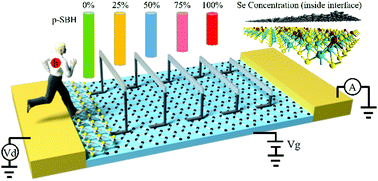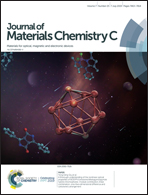A promising strategy to tune the Schottky barrier of a MoS2(1−x)Se2x/graphene heterostructure by asymmetric Se doping†
Abstract
Controlling the p-type electrical transport behavior of nanoelectronic devices remains a grand challenge in reducing the Schottky barrier. To address this issue, we systematically investigate the effect of asymmetric Se doping on the interlayer interaction and electronic properties of a MoS2(1−x)Se2x/graphene heterostructure by first-principles calculations incorporating a semiempirical dispersion–correction scheme. The results show that the interfacial binding can be enhanced by Se doping inside the interface, while the effect of Se doping outside the interface is negligible on the interfacial binding. The type and height of the Schottky barrier can be tuned by changing the concentration and sites of the Se dopant at the interface. Further, it is found that by increasing the concentration of the Se dopant inside the interface the transition from an n-type Schottky barrier to a p-type can be realized, and a low p-type Schottky barrier is gained at the interface for highly efficient charge transfer. Lastly, it is confirmed that the redistribution of the interfacial charge leads to a shift of the Fermi level, and thus determines the type and height of the Schottky barrier. These conclusions provide rational evidence for the asymmetric doping concepts to design and fabricate MoS2-based field effect transistors.



 Please wait while we load your content...
Please wait while we load your content...